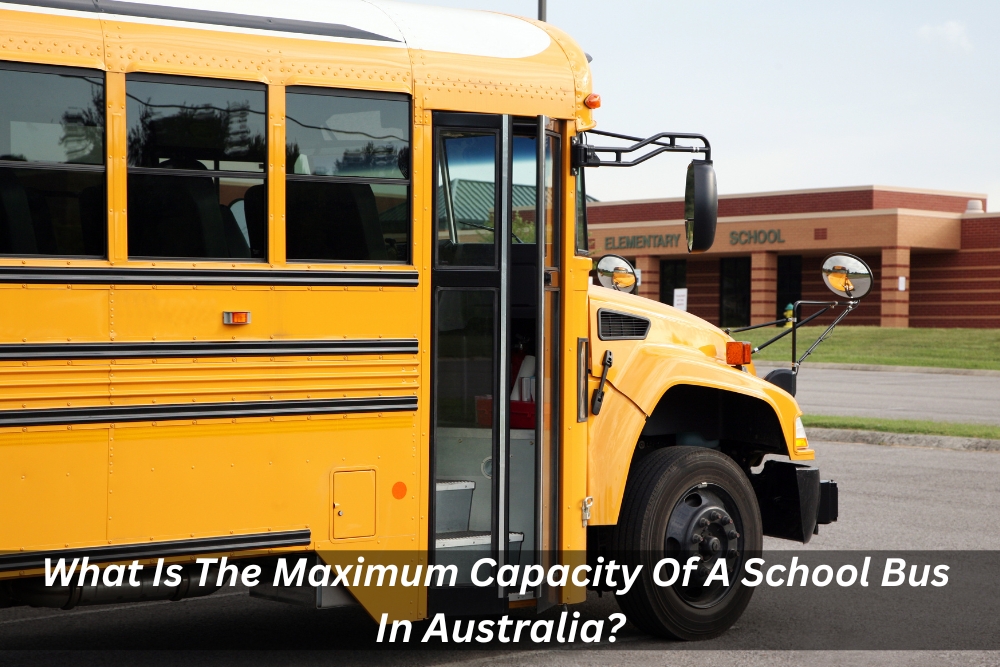What Is The Maximum Capacity Of A School Bus In Australia?

Are you curious about school bus sizes and capacity in Australia? When it comes to transporting students, knowing the maximum capacity of a school bus is crucial. From school bus seats to big bus dimensions, understanding these factors ensures safe and efficient transportation for students.
In this blog, we’ll delve into the topic of school bus sizes and capacity in Australia, exploring the regulations and standards that govern these essential vehicles. Whether you’re a parent, educator, or simply interested in the subject, read on to discover the vital details about school bus capacity Down Under.
What are the different sizes of school buses?
In Australia, school buses come in various sizes to accommodate different transportation needs.
- The most common sizes of school buses include small buses, also known as minibuses, which typically have a seating capacity of 15-25 passengers.
- Medium-sized school buses can carry around 25-40 passengers.
- While larger buses, often referred to as full-size or standard buses, have a capacity of 40-60 passengers.
These size variations allow schools and transportation providers to select the appropriate bus size based on the number of students to be transported.
What are the regulations and guidelines for school bus sizes and capacity?
The regulations and guidelines for school buses are set by the Australian authorities. The maximum length of a full-size bus is 45 feet (13.7 meters), while the minimum length for a smaller bus is 25 feet (7.6 meters). A full-size school bus must also have a minimum width of 7.5 feet (2.3 meters) and a height of 13.5 feet (4.1 meters) in order to be approved for student transport. Additionally, all buses must adhere to the window rule and provide high-quality seating with at least 2.5 feet (0.76 meters) between each seat in order to ensure safety and comfort for passengers aboard the vehicle.
What is the importance of adhering to the carrying capacity limits?
Adhering to the carrying capacity limits is of utmost importance when it comes to school bus conversions. Ensuring that a converted school bus does not exceed its designated capacity is vital for several reasons.
- Firstly, it ensures the safety of passengers by preventing overcrowding, maintaining proper weight distribution, and minimising risks during transit.
- Secondly, compliance with carrying capacity limits promotes adherence to road regulations, reducing the likelihood of fines or legal complications.
- Moreover, it enables efficient planning and allocation of resources, ensuring that schools utilise school buses optimally and effectively meet their transportation needs.
Therefore, whether embarking on a school bus conversion project or utilising existing school buses, staying within the carrying capacity limits is crucial for the overall safety and functionality of the transportation system.
What are the factors that affect the maximum capacity of a school bus?
- Several factors influence the maximum capacity of a school bus, such as the bus’s size and layout. Generally, larger buses can accommodate more passengers.
- Regulatory guidelines and safety standards are crucial in establishing the maximum capacity, taking into account factors such as seating arrangement, the presence of seat belts, and the availability of emergency exits.
- In addition, the length of the bus directly affects its capacity, as smaller buses can accommodate fewer passengers compared to larger ones.
- When determining the maximum capacity, experts also take into account the vehicle’s design and the availability of parking space, both of which impose weight restrictions.
By considering these factors, you can determine the appropriate number of coach seats to ensure safe and efficient transportation for students.
How can you maximise the carrying capacity of your school bus?
There are several ways to maximise the carrying capacity of your school bus.
- Firstly, it is important to ensure that all passengers have adequate legroom and aisle space when seating them in the vehicle. To adhere to the window rule and ensure that there is at least a 2.5 feet distance between each seat, one can achieve this. Furthermore, buses with flat fronts typically have a higher carrying capacity compared to buses with curved fronts, so it is important to consider this when determining passenger capacity.
- Consider bus conversions if you need extra space as another way to maximise the carrying capacity of your school bus. These conversions may involve adding coach-style seating or additional storage compartments in order to accommodate more passengers safely and comfortably on board. Additionally, when considering a bus conversion, it is important to remember that the maximum length of a school bus should not exceed 45 feet or the square footage of the vehicle should not exceed 7.5 feet. By following these guidelines, you can ensure that your bus remains balanced and safe for all passengers aboard.
Conclusion
All in all, the maximum capacity of a school bus in Australia depends on several factors, such as the length and width of the bus, adhering to the window rule, and how much space is needed for passengers to be seated comfortably. By understanding these regulations and guidelines, you can ensure that your school bus can safely accommodate its full passenger capacity.
Visit Sege Seats today to discover the perfect seating solutions for your school bus needs in Australia. With our wide range of high-quality seats, we can help you maximise the capacity of your school bus while ensuring comfort and safety for every passenger. Don’t miss out on the opportunity to create a spacious and efficient transportation experience. Contact us now and let us assist you in finding the ideal seating options for your school bus!





